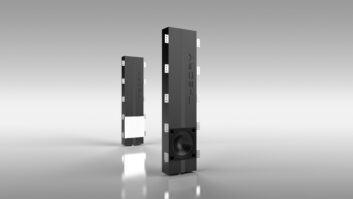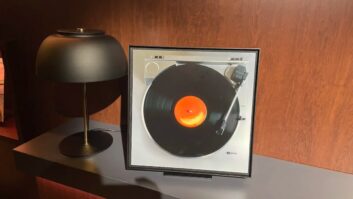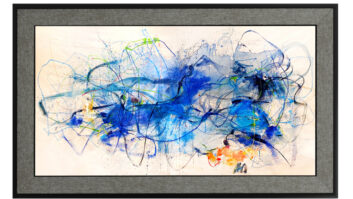The home audio market is undergoing a major transition as new object-based surround technologies enter the market, soundbars continue to grow and push down demand for audio/video receivers (AVRs), and sales of wireless multiroom-audio systems continue to grow.
Demand for Ultra HD 4K TVs is bringing step-up customers back into stores, where they are more likely now to upgrade their home theater system’s audio components, and the sale of 4K Blu-ray discs and videostreaming services offering object-based surround will also help drive up demand for new audio components.
Meantime, high-resolution audio (HRA) initiatives undertaken this year promise to expand awareness.
With the audio market continuing to undergo a transition through 2016, TWICE assembled a panel of executives from leading audio brands to discuss audio’s performance in 2015 and the outlook for 2016. Here’s how the executives responded to emailed questions.
COMPONENT-AUDIO OUTLOOK
TWICE: How did component-audio sales fare at the retail in 2015? And what’s the outlook for 2016?
Doug Henderson, B&W Group: Audio components for us had a good year in 2015, and we expect bigger growth in 2016. The stereo market, in particular, is seeing strong growth driven by a younger generation’s growing interest in vinyl LPs, which in turn moves them in the direction of a component audio system.
Dave Rogers, Harman: The demand for soundbars has grown and is expected to continue on an upward trend throughout 2016. For Harman, 2015 was a year of positive growth for soundbars as standard TV sound systems continue to fall short of consumers’ expectations for optimal audio-quality. Now the question is: what else can a soundbar do in the living room? It will be interesting to see this question answered as we enter the New Year.
Bob Goedken, Yamaha: Overall, audio sales for us have been very stable, and we are looking to have a very favorable 2016 that continues this trend. AVRs have been slightly up, soundbars significantly up, and speakers and two-channel have been stable. We have introduced new products that will expand our newest wireless multiroom audio ecosystem and expand our assortment of Dolby Atmos and DTS:X-enabled component products, including the world’s first soundbar (YSP-5600) to include both of these technologies in one package.
Mark Casavant, Klipsch: Klipsch has maintained leadership in component loudspeakers and continues to invest in performance audio for stereo and multi-channel applications. We continue to pursue the growth segments, such as soundbars and wireless portable speakers, while we continue to evolve our high-resolution approach to sound quality in all categories in which we participate.
As the market for audio shifts, we are taking a position that allows enthusiasts to easily acquire an assortment of quality from Klipsch. This includes speakers that address the surge in vinyl, taking a stand for better sound where it matters, such as phones and tablets that stream sound. If the Klipsch name is on a product, it will outperform similarly priced competitors, no matter the category. In this regard we anticipate a strengthened leadership position in 2016, with exciting new products that we will reveal at CES 2016.
Josh Talge, DEI: YTD 2015, the soundbar market grew 13 percent versus the previous year – a healthy rate compared to other audio categories. The optimistic view for 2016: 4K TV sales in 2015 continued to grow versus the prior year, and we can assume customers will start to replace their sound solutions in the pending year to support their new TV.
The traditional speaker market has stabilized. YTD sales were flat versus the previous year – much better than the 12 percent decline that the category saw from 2013 to 2014. The category should stabilize if not grow slightly with the new technologies in the market — Dolby Atmos and DTS:X — in 2016.
Kevin Zarow, D+M: Overall, 2015 has been a fairly steady year in the component audio business. Growth in the soundbar category remains strong as consumers seek a better audio experience than a flat-panel display can deliver. Turntables were once again a bright spot as a younger generation is discovering vinyl for the first time while an aging generation rediscovers it.
Finally, the AVR has once again fought back against its predicted demise with relatively flat sales. For 2016, we expect soundbars to maintain healthy momentum, and while we’ll continue to see a shift towards lower price points, we expect AVRs to be a significant part of the component business as Dolby Atmos, DTS-X and HDCP 2.2 become more widely adopted.
TWICE: Will Dolby Atmos and DTS:X accelerate component-audio sales in 2016?
Henderson: With all due respect to Dolby’s power in the marketplace, we think Atmos and other so-called 3D audio formats will remain a niche within a niche, which is to say largely appealing to a sub-set of people creating dedicated theater rooms. It’s a great technology, and we love selling more speakers, but it has proven difficult to move people past 5.1 systems.
Rogers: As more content becomes available on download and Blu-ray, consumers will likely seek products with Dolby Atmos and DTS:X features. With receivers making Dolby Atmos and DTS:X available at midlevel pricing, more consumers are able to enjoy these features without having to buy higher-tier products.
Often, consumers are conditioned to consider potential obsolescence. While they may buy products of this caliber less frequently, they tend to overbuy feature sets to ensure their product covers their needs in the long term – regardless of their immediate understanding of the feature benefits.
Goedken: Dolby Atmos and DTS:X will provide a boost in component-audio sales in 2016, especially with early adopters who are always looking for the best overall home theater systems and want to be enveloped in all the action that movies encoded in the newest surround sound formats can provide. The biggest challenge that will be faced is the ability to gain wide acceptance by the mainstream customer that might not want 11+ speakers in their listening space. Yamaha hopes to address this issue with our Dolby Atmos/DTS:X-enabled soundbar, the YSP-5600, giving customers the ability to enjoy the experience without the speaker placement complexity.
Casavant: The state of the art soon becomes the standard, and as the technology for surround sound advances from cinema to the home, we as a professional cinema loudspeaker manufacturer are decidedly at the forefront with our consumer products. As Dolby Atmos and DTS:X enhance the home theater surround experience, we at Klipsch will deliver the speaker assortment in 2015 and 2016 to allow consumers to easily enjoy the newest, state-of-the-surround-art with our unique approach of high sensitivity, low distortion and controlled-directivity speaker design.
The new surround standards bolster AVRs, audio components and loudspeakers as an investment in the home and family lifestyle. These formats will also drive custom installations going forward in a profound way.
These surround formats influence the need for new systems and also allows current enthusiasts to upgrade. Object-based surround technology absolutely delivers improved performance that is demonstrable, and retailers have the opportunity to put the “show” back into their showrooms with compelling and powerful demonstrations.
And the industry needs to tell the story of the immense benefits of up-mixing and backward compatibility, so consumers gain from this new surround technology. This is where the SOTA becomes the new standard. Once you experience 7.1.4, even up-mixed, it is difficult to listen to “only” 5.1.
Talge: Absolutely. The focus and attention being paid toward component audio as a result of object-based audio will get more consumers into retail environments to hear the immersive experience, which will then transfer into the buying consideration process — which we haven’t had in a long time.
New technologies that help us tout buying component speakers are critical to draw attention to the category. Consumers have been so focused on soundbars over the past five years, and the dramatic improvements that have been made to sound quality have put a lot of pressure on the component market. We believe technologies such as Atmos are a great way for this category to again be highlighted for the unrivaled immersive experience of discrete sound you’re just not going to find in any soundbar. Add the releases of popular titles in Atmos and DTS:X, and consumers are once again going to be marketed better audio experiences with their favorite movies.
Zarow: The 3D surround experience must be demonstrated in order for it to be successful, so the more consumers we can introduce to Dolby Atmos, DTS-X and Auro3D, the greater the potential adoption of the technology. With that said, we think 3D Surround will play a key role in helping to maintain a strong AVR business, but we don’t see it as a source of “overall” growth. With regards to in-ceiling speakers vs. the speaker-top modules, it will really come down to whether it’s a retail sale vs. a custom-install sale or if consumer is installing their new system into an existing “finished” room or an unfinished basement, etc.













